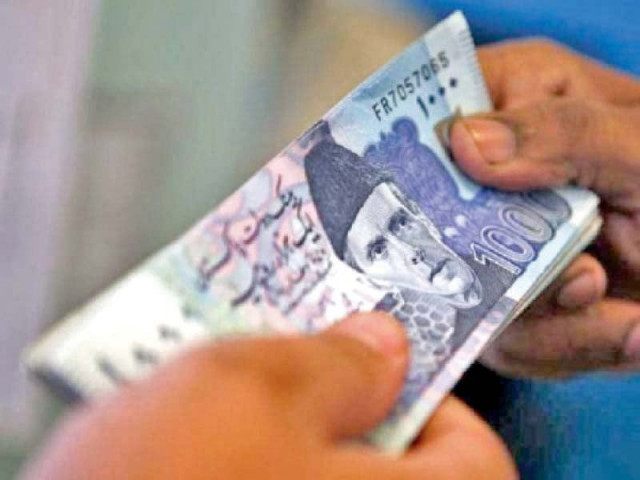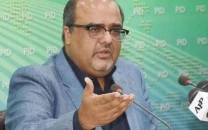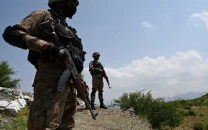Inflation rockets to a record 38%
Currency devaluation, hoarding push prices to highest ever level

Pakistan’s annual inflation rate accelerated to the history’s highest ever level of 38% in May due to supply shocks, currency devaluation and the absence of any checks on hoarding and profiteering.
As the general elections are due later this year, the ruling coalition would be hard pressed to defend it’s polices as people are finding it hard to make both end meets.
The Pakistan Bureau of Statistics (PBS) -- the national data collecting agency -- on Thursday reported that the Consumer Price Index rose to 38% last month compared to a year ago. This was the highest ever inflation reading in Pakistan, breaking all previous records and also beating the forecast of the Ministry of Finance with a big margin.
Inflation has embedded and the inflationary expectations remain high, Minister of State for Finance Dr Aisha Pasha admitted on Thursday in a parliamentary committee hearing. But she hoped that after the next fiscal year, the inflation rate would come down to a single digit.
Also read: Pakistan keen to cut a ‘new’ IMF deal
For the next fiscal year, the government is going to set the inflation target at 21%, indicating that people will not see any relief in their present miserable situation.
People living in rural areas have been hit the most, as the average increase in the prices of goods and services that they used increased by 42.2% last month. The majority of the population still lives in rural areas.
The inflation rate jumped to 35.1% in the cities, according to the PBS. Politicians will have to face the brunt during the time of electioneering, said Khalid Magsi, the member of National Assembly from Balochistan.
The food inflation jumped to 52.4% in rural areas and it remained at 48.1% in cities, according to the PBS.
The global commodity prices, withdrawal of subsidies, increase in electricity, gas prices and the currency devaluation were the main reasons behind the higher inflation in Pakistan, said the minister of state for finance. She said the governments in Punjab and Khyber-Pakhtunkhwa were not doing enough to contain inflation.
One of the charges against the government of Pakistan Tehreek-e-Insaf was that it failed to contain inflation which, at the end of its tenure, was 13.4%.
Excessive note printing is also a reason behind rampant inflation in Pakistan, said MNA Ali Pervaiz Malik.
SBP Deputy Governor Dr Inayat Hussain said that during the past 13 years the currency circulation increased by 600% to Rs8.8 trillion. Even in terms of the size of the economy, the currency in circulation increased from 8.7% of GDP in 2010 to 11.3% of GDP in 2022, which shows that the size of the informal economy is on the rise in Pakistan.
The central bank had set the interest rate at 21% -- the highest in the history of Pakistan –- yet, it could not arrest the index from hitting the highest ever level of 38% in May. The SBP is going to announce next monetary policy after the budget, which will give an indication about the government’s future priorities.
There were eight consumer price groups that saw the inflation rate over 40%, including alcoholic beverages and tobacco that surged to 124% due to the government’s decision to increase taxes on tobacco and beverages. Yet, the Federal Board of Revenue has sustained a massive revenue shortfall of Rs428 billion during the first 11 months of this fiscal year.
There were hardly any consumable goods that had not seen their price shot up in recent months.
The core inflation, which is calculated after excluding the volatile energy and food prices, increased in May to 20% in urban areas and 26.9% in rural areas -- far above the central bank’s interest rate. Despite constantly increasing the interest rates, the core inflation has not receded that should be a matter of concern for the monetary policy committee members.
There was huge increase in the food inflation rate, mostly because of disruption of supply chains and weak checks. The prices of good and non-alcoholic beverages increased 49% last month.
Flour -- the staple food of every household -- saw prices soared nearly 100% while wheat became expensive by 95% in May compared to a year ago.
The inflation rate for the transport consumer price group was 53%, recreation and culture 72%, beverages and tobacco groups 124%, and for perishable food group, it was 34%. The inflation rate for non-perishable food products surged 51% last month.
The prices of pulses jumped up by 58% and tea prices increased 113%.
Non-food inflation rate increased to 26.6% in cities and 32.5% in rural areas. The electricity prices in May were higher by 59% and that of gas 63% compared to a year ago. Petrol was expensive by 70% compared to a year ago. The cost of text books increased by 114% and the stationary became too expensive by 80%.
For the July-May period of the current fiscal year, the data showed that the average inflation rate stood at 29.2%, which was far higher than the official target of 11.5% for the current fiscal year set before the floods.
The government and the provinces did not have adequate capacity to manage rapidly increasing inflation and part of the reason was higher global commodity prices, said Dr Aisha.



















COMMENTS
Comments are moderated and generally will be posted if they are on-topic and not abusive.
For more information, please see our Comments FAQ